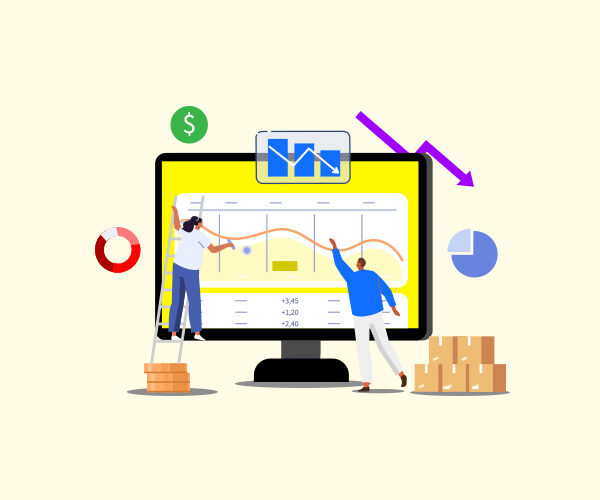What is Stock?
Stock can be anything in the form of goods used by a business to generate profit. It can be finished goods or can be materials that are being used in the production. Stock is labeled as the company’s main asset on the balance sheet. If the stock is disturbed, a company’s whole performance will be affected.
What are Stock Levels?
A required amount of stock is needed for effective and efficient control of products. Stock levels help avoid under and overstocking of goods.
Stock levels are divided into five following types:
Types of Stock Levels
- Minimum LevelThe level of stock at which actual inventory is not allowed to further fall. In other words, it is the minimum quantity of the goods that must be present all the time in storage. It is also known as Buffer or Safety stock.
- Maximum LevelThe upper limit of stock level at which actual stock is not allowed to exceed. The primary purpose of this is to avoid overspending the capital.
- Average Stock Level
The level below maximum stock level but above minimum stock level is known as the average stock level. The companies must hold this level to run their operations in a given timeframe.
- Danger Level
The alarming stock level tells that the companies need to take some serious action to acquire their stock immediately. As the name shows, this is the most dangerous situation for a company that would force a firm to stop its operations.
- Reorder Level
A stock level indicates a need to generate a request to the supplier to re-order the stock. It prevents stock levels from falling into the danger level.
What is Stock Control?
A procedure is responsible for keeping appropriate stock quantity on hand to run its operations smoothly. Stock Control is accountable for fulfilling the customer’s demands without any delay by controlling the stock levels.
Stock Control vs Stock Management
Stock control and stock management may sound similar, but both are very different concepts.
Stock Management |
Stock Control |
| It involves long term business strategies | It involves daily operations |
| It uses indirection to forecast and procure the business needs | It is used in storage layouts, picking, physical placement, etc. |
| The purpose of it is to achieve stock balancing between stock shortage and surplus | The purpose behind it is to make sure that proper stock is available when it is needed. |
Best Way to Control Stock Levels
Stock optimization is vital to maintain your expenses and increase the profit margin. If your stock levels are not adequately managed, your business may be in danger. There are many ways to control stock levels. Some of the popular ways include:
Understanding your demand
A clear understanding of your demand is critical to control the stock levels. You need to have an idea about products that are satisfying market demands along with the required quantity. For example, let’s suppose that you have sold 5000 laptops in the previous year. Now, it doesn’t mean that you need to order 5000 laptops again. You will have to analyze your laptop demands in the last five years or more. You can then set your stock levels because you have a clear analysis result that indicates demand for your product between 4000 to 6000 laptops.
Policies for stock levels
Devise policies to ensure that required goods have the appropriate quantity. You can only perform the audit on your stock controlling management if you have applied some stock level controlling policies in your business.
Automated inventory management system
It is challenging to control inventory levels without any automated stock controlling system. The inventory management system is specifically designed for this purpose. They have built-in functionalities that can control and manage stock levels very quickly.
Why are automated inventory control systems needed to control the stock levels?
As we all know, the world is moving towards automation. Some of the fields are even advanced enough to manage their operations with robotics.
Sometimes, it is challenging to manage the stock levels manually. All business functions depend on stocks. Hence, an automated inventory controlling system must control the stock level. It will minimize the chance of errors and avoid miss calculations in stock levels.
How does an automated inventory system control the stock levels?
Automated Inventory management systems can manage the stock at each level. These systems are designed according to the exact calculated procedures of each stock level. . It will not allow a company to fall into the danger level.
Which Stock Management Systems are best for managing and controlling stock?
A firm must be cautious while choosing the perfect inventory management system. The system must be according to the needs of your business. It must be designed for your business type.
There is a built-in feature in the inventory management system that can handle the stock.
Always be careful with your stock, as it is the main asset on your balance sheet. Firms cannot control supply as a whole. Businesses need to split the inventory into different levels. This will allow stock regulating mechanisms to be easily implemented.
Assigning levels to the stock is not enough to control it. You must keep a check and balance on these levels for the smooth performance of your business. Proper stock holding techniques can bring a lot of success.



